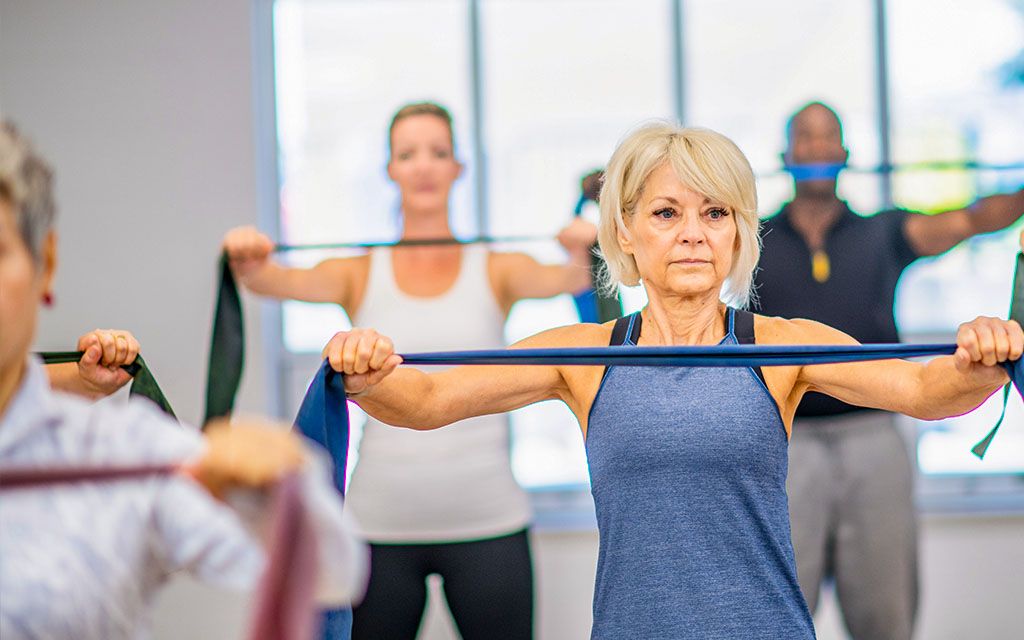As we age, it becomes increasingly important to maintain our physical and mental well-being. One effective way to achieve this is through practicing yoga. Yoga is an ancient practice that combines physical postures, breathing exercises, and meditation to promote flexibility, strength, balance, and overall vitality. In particular, yoga can be highly beneficial for seniors, as it helps improve their physical strength while also nurturing their mental well-being.
The Mind-Body Connection
The mind-body connection refers to the interrelationship between our mental and physical health. It is widely accepted that our mental state can greatly impact our physical well-being, and vice versa. Yoga focuses on cultivating this mind-body connection, allowing seniors to develop a better understanding of their body's needs and limitations.
Benefits of Yoga for Seniors
Yoga offers a wide range of benefits for seniors, both physically and mentally. Some of the key benefits include:
- Improved strength: Yoga poses work to strengthen the muscles, reducing the risk of injuries and aiding in the performance of day-to-day activities.
- Enhanced flexibility: Regular yoga practice helps increase flexibility, making it easier to perform simple tasks such as bending, reaching, and turning.
- Better balance and stability: Many yoga poses require balance, which helps improve stability, reducing the risk of falls.
- Pain management: Through gentle stretches and mindful breathing, yoga can help alleviate chronic pain, such as arthritis or joint stiffness.
- Stress reduction: Yoga incorporates meditation and deep breathing techniques, promoting relaxation and reducing stress levels.
- Improved mental clarity: The focused attention required during yoga practice helps to improve concentration and promote mental clarity.
- Increased self-awareness: Yoga encourages self-reflection and self-acceptance, fostering a deeper connection with oneself and promoting self-care.
Types of Yoga for Seniors
While there are various styles of yoga, some are better suited for seniors due to their gentle approach and focus on flexibility and strength-building. Some popular yoga styles for seniors include:
- Hatha Yoga: This is a gentle form of yoga that emphasizes slower movements and breathing exercises, making it ideal for seniors of all fitness levels.
- Chair Yoga: Designed for individuals who may have difficulty with standing poses, chair yoga includes modified poses performed while seated on a chair.
- Restorative Yoga: This style focuses on relaxation and deep stretching, using props to support the body in various poses.
- Yin Yoga: Yin yoga involves holding poses for an extended period, allowing for deep stretches and improved flexibility.
Getting Started with Yoga
Before starting a yoga practice, it is important for seniors to consult with their healthcare provider, especially if they have any pre-existing medical conditions or physical limitations. Once you have received the green light, follow these steps to get started:
- Find a qualified instructor: Look for a yoga instructor who specializes in teaching seniors or has experience adapting poses for various abilities.
- Start with beginner-friendly classes: Choose classes specifically designed for beginners or seniors to ensure a safe and appropriate pace.
- Listen to your body: During yoga practice, it's crucial to listen to your body's signals and modify poses as needed to avoid strain or injury.
- Take it slow and be patient: Progress in yoga takes time, so be patient with yourself and focus on gradual improvement rather than immediate results.
- Practice regularly: To experience the full benefits of yoga, aim to practice regularly, even if it's just a few minutes each day.
Incorporating Yoga into Daily Life
Yoga doesn't have to be restricted to the yoga mat. Seniors can incorporate the principles of yoga into their daily lives to maintain strength and flexibility. Some simple ways to do this include:
- Mindful breathing: Take a few moments throughout the day to focus on your breath, taking slow, deep breaths to promote relaxation and reduce stress.
- Stretch breaks: Incorporate short stretching breaks throughout the day to help counteract the effects of prolonged sitting or stiffness.
- Balancing exercises: Practice standing on one leg while doing everyday tasks such as brushing your teeth or waiting for the kettle to boil.
- Meditation: Set aside a few minutes each day to sit quietly and observe your thoughts. This can help improve mental clarity and reduce anxiety.
Conclusion
Incorporating yoga into the lives of seniors can bring numerous physical and mental benefits. By embracing the mind-body connection that yoga promotes, seniors can improve their strength, flexibility, balance, and overall well-being. Whether practicing on a yoga mat or incorporating yoga principles into daily life, seniors have a valuable tool to help maintain their vitality and enjoy an active, healthy lifestyle.



